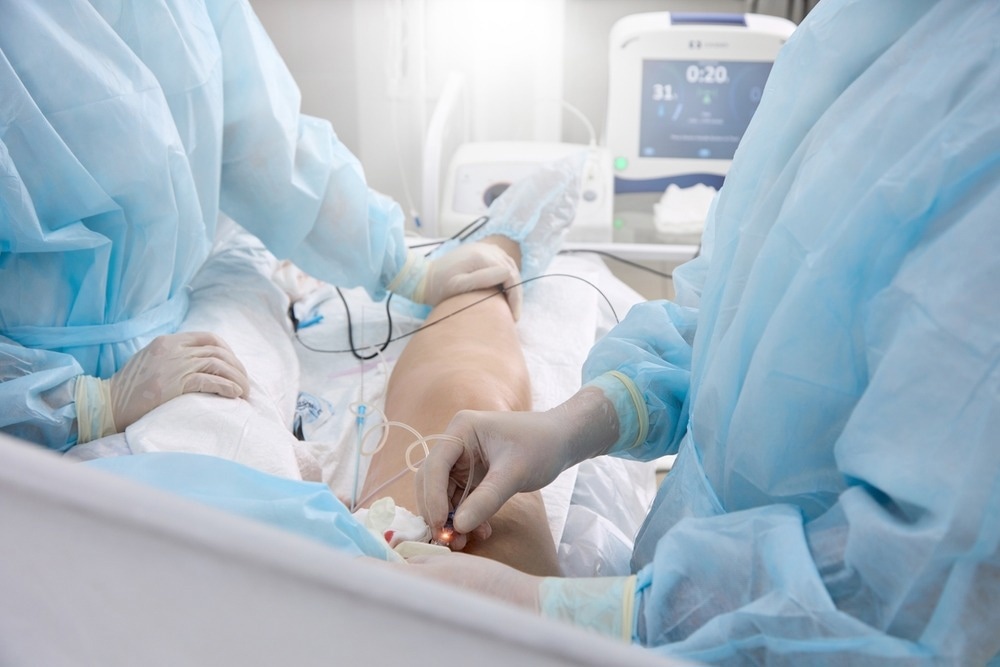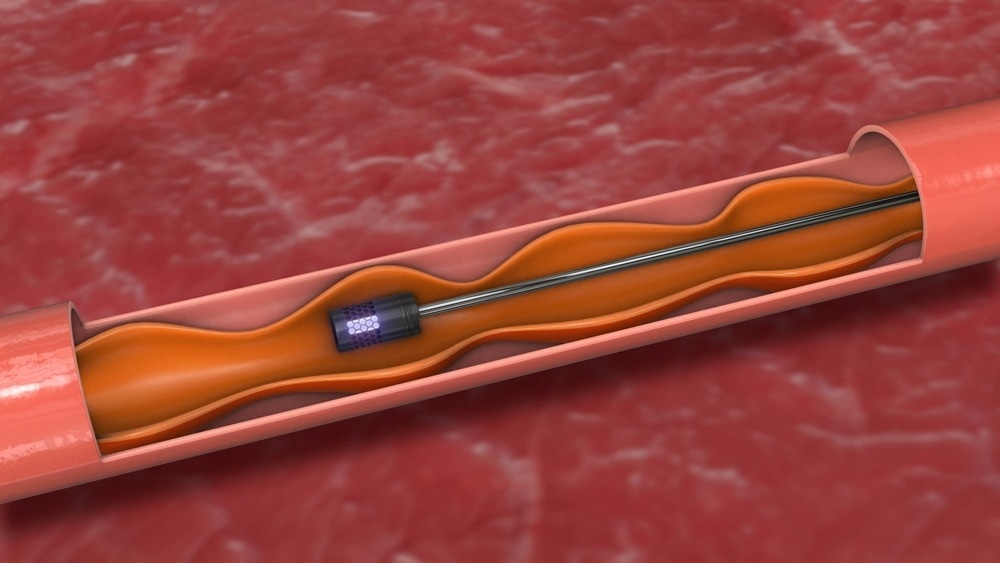What is ablation technology?
Key medical applications: Where ablation technology is making an impact
The competitive landscape and key players in the ablation market
Technological innovations driving the growth of ablation technology
Regulatory considerations for ablation devices
Market potential and growth opportunities in ablation technology
Conclusion
References
Further reading
What is ablation technology?
Ablation therapy consists of a minimally invasive treatment, which can be used for treating cancer by destroying tumors and other abnormal tissues within the body. It uses either extremely high or low temperatures to remove a layer or layers of tissue. However, radiofrequency energy or electrical currents can also be used.1
Ablation therapy is different from surgical resection, which consists of the removal of an entire or a part of an organ.1
Commonly used methods for ablation therapy include (i) microwave ablation, (ii) high-energy radiofrequency ablation, (iii) thermal balloon ablation, (iv) laser ablation, and (v) cryoablation.1
Microwave ablation consists of a thin probe that is inserted through a small incision made on the skin. The probe is then placed using ultrasound, CT, or MRI to find the area that needs to be treated; the tip of the probe then releases microwaves to eliminate the target tissue.1
High-energy radiofrequency ablation is also similar to microwave ablation, with the difference being that only radiofrequency waves are used instead of microwaves.1
Thermal balloon ablation consists of a balloon being inserted into the body cavity, which is filled with fluid that is heated to 190 degrees Fahrenheit.1
Laser ablation utilizes a laser to treat skin discolorations or lesions.1
Cryoablation consists of a probe or another device that is inserted using a thin needle or is used on tissue before being supercooled to -4 degrees Fahrenheit with the use of liquid nitrogen or argon. The tip of the probe enables cool gas to flow through, which produces the formation of ice crystals and destroys the tissue being targeted.1
 Surgical treatment varicose veins in hospital by team vascular surgeons by radiofrequency ablation. Image Credit: Aleksandr Finch/Shutterstock.com
Surgical treatment varicose veins in hospital by team vascular surgeons by radiofrequency ablation. Image Credit: Aleksandr Finch/Shutterstock.com
Key medical applications: Where ablation technology is making an impact
Ablation therapy usage has developed significantly in medical technology as it can treat a range of medical conditions, including catheter or cardiac ablation, which is used to treat an irregular heartbeat (arrhythmia) by destroying related parts of the heart.1
Interestingly, a study presented at the American College of Cardiology’s Annual Scientific Session Together With the World Congress of Cardiology, found a new ablation technology known as pulsed field ablation, which was successful at eliminating heart arrhythmias for 12 months in up to two-thirds of patients.2
As previously mentioned, ablation therapy can also be applied for treating cancer, including cancerous tumors of the kidney, liver, and other organs that can be treated using cryoablation or other types of ablation procedures; this innovative technique may be more preferential due to its minimally invasive nature.1
Radiofrequency ablation (RFA) can also be used for pain management, as this interventional technique uses thermal energy to disrupt peripheral nerves that carry nociceptive signals back to the central nervous system.
RFA is typically considered after surgical procedures that involve metallic hardware placement as these patients usually also experience joint degeneration that is secondary to the surgery, which results in additional pain that can be treated with RFA. This technique of ablating medial branch nerves that supply to facet joints can also be effective in treating facet joint pain.3
With the high global burden of pain-related disease, the translation of ablation therapies is significant for meeting the market demand. Chronic pain impacts society greatly, demonstrated by the financial cost in 2008, including over €200 billion per year in Europe and $635 billion per year in the USA.3
The competitive landscape and key players in the ablation market
Major industry leaders in the ablation technology field include Johnson and Johnson, Medtronic, and Boston Scientific Corporation.4
The first-generation pulse field ablation device “Farapulse” by Boston Scientific Corporation has already gained approval in 2021 by the EU and recently gained U.S. Food and Drug Administration on January 31, 2024.4,5
 Targeted laser ablation for varicose vein relief. Image Credit: Silver Place/Shutterstock
Targeted laser ablation for varicose vein relief. Image Credit: Silver Place/Shutterstock
Other key companies involved in the ablation technology market include Abbott, AngioDynamics, Inc., AtriCure, Inc., BTG PLC, Conmed Corporation, Olympus Corporation, and Smith & Nephew PLC.4
These companies meet the demand for ablation technology, with the global prevalence of atrial fibrillation increasing by approximately 20%, which impacts 0.51% of the worldwide population. With medications not always affecting reducing symptoms in patients, cardiac ablation has become an alternative treatment option.4
Active research in the field has led to key innovations; for example, the Heart Rhythm Society has announced the use of pulsed field ablation as an alternative treatment option to conventional thermal treatment. This technology utilizes electrical pulses to produce electroporation and induce cardiac cell death.4
Research in this area led to the FDA approval for Abbot’s TactiFlex™ Ablation Catheter in May 2024, which aims to be safer and less time-consuming than conventional treatment options.4
Technological innovations driving the growth of ablation technology
Recent advancements in ablation technology cover a range of different areas, including remote navigation technology, improved imaging, and robotic-assisted ablation procedures.6,7
Remote navigation technologies have been developed to simplify catheter manipulation during atrial fibrillation ablation.6
Three main remote navigation systems include Niobe® magnetic navigation system, the Sensei™ robotic navigation system, and the Amigo™ remote catheter system.
These systems use different technologies for remote navigation including a remote magnetic system as well as a remote catheter manipulator, with the overall impact being that operators can control catheters from a distance using a 3D navigation handle.6
Additionally, advancement in imaging techniques also support navigation systems, including the emergence of electro-anatomical mapping techniques that aim to create 3D geometry of the left atrium and pulmonary veins to enable precise localization of the catheter top in the model.6
Advancements in energy sources for ablation technology include using microwave ablation, which has become a significant, minimally invasive treatment option for tumors that are localized in many organs.
Using microwave energy for thermal ablation has become significant for treating diseases in a variety of sites, especially due to the advantages that microwave energy has over other energy modalities, including radiofrequency ablation and cryoablation.8
The benefits of microwave energy consist of having a capacity for higher peak temperatures throughout the treatment area, a higher ability for penetrating high-impedance tissue, and a decreased susceptibility to heat sink effects.8
All these innovations in the ablation technology field meet the expanding market demand for a range of diseases, with many companies furthering the innovation through research and increasing business opportunities.4,6,8
Regulatory considerations for ablation devices
Ablation devices are considered medical devices, which are required to go through discovery, development, clinical testing, and regulatory review before being ready for successful clinical use.9
The FDA is responsible for regulating medical devices, with the Center for Devices and Radiological Health (CDRH) being a sub-department that plays a significant role in facilitating the development of the device.9
In the European Union, medical devices are also required to undertake a conformity assessment to show legal requirements are being met for safety and performance. Once this is passed, manufacturers can place a CE (Conformité Européenne) mark on the medical device.10
A challenge when navigating these regulatory landscapes includes but is not limited to (i) the increasing cost of medical device development as a result of regulatory burdens, (ii) capital being diluted through project failures and inefficient management, as well as (iv) decreased product prices and (v) reimbursement.9
These factors can cause reduced margins for innovation and a requirement for further optimization of the pathway for medical devices to reach the market successfully.9
Market potential and growth opportunities in ablation technology
The market size of global ablation technology is valued at 6.05 billion in 2023 and is expected to grow at a compound annual growth rate of 9.8% between 2024 and 2032, with a prediction of reaching approximately 14.0 billion by 2032.4
North America, particularly the U.S., has historically dominated the market share for ablation technology, with healthcare industry pioneers playing a significant role in driving technical advancements.4
Other major regions in the market include Europe, Asia Pacific, Latin America, Middle East and Africa.4
With minimally invasive treatments being the preferred treatment option for a range of different diseases, the opportunity for further research in these areas can enable ablation technology to be utilized for enhanced patient care.3
Conclusion
Ablation technology holds great potential in healthcare, with its minimally invasive technique being significant for a range of diseases, including cancer. Additionally, with many competing companies developing innovative ablation technologies, the potential for improving patient outcomes may be revolutionary while also offering lucrative market opportunities in this growing field.3,4
References
- Ablation Therapy. Cleveland Clinic. Published October 9, 2019. Accessed October 1, 2024. https://my.clevelandclinic.org/health/treatments/17801-ablation-therapy
- New Ablation Technology Found Safe, Effective for Atrial Fibrillation. American College of Cardiology. Published March 6, 2023. https://www.acc.org/About-ACC/Press-Releases/2023/03/06/14/01/New-Ablation-Technology-Found-Safe-Effective-for-AFib
- Abd-Elsayed A, Hughes M, Narel E, Loebertman MD. The Efficacy of Radiofrequency Ablation for Pain Management in Patients with Pre-Existing Hardware at the Site of Ablation. Pain and Therapy. 2020;9(2):709-716. doi:https://doi.org/10.1007/s40122-020-00201-4
- Ablation Technology Market Size, Growth, Report 2024-2032. Expertmarketresearch.com. Published 2024. Accessed October 1, 2024. https://www.expertmarketresearch.com/reports/ablation-technology-market
- Boston Scientific Receives FDA Approval for FARAPULSETM Pulsed Field Ablation System. Boston Scientific. Published January 31, 2024. Accessed October 1, 2024. https://news.bostonscientific.com/2024-01-31-Boston-Scientific-Receives-FDA-Approval-for-FARAPULSE-TM-Pulsed-Field-Ablation-System
- Mahida S, Berte B, Yamashita S, et al. New Ablation Technologies and Techniques. Arrhythmia & Electrophysiology Review. 2014;3(2):107. doi:https://doi.org/10.15420/aer.2014.3.2.107
- Bassil G, Markowitz SM, Liu CF, et al. Robotics for catheter ablation of cardiac arrhythmias: Current technologies and practical approaches. Journal of Cardiovascular Electrophysiology. 2020;31(3):739-752. doi:https://doi.org/10.1111/jce.14380
- Pfannenstiel A, Iannuccilli J, Cornelis FH, Dupuy DE, Beard WL, Prakash P. Shaping the future of microwave tumor ablation: a new direction in precision and control of device performance. International Journal of Hyperthermia: The Official Journal of European Society for Hyperthermic Oncology, North American Hyperthermia Group. 2022;39(1):664-674. doi:https://doi.org/10.1080/02656736.2021.1991012
- Lottes AE, Cavanaugh KJ, Chan YYF, et al. Navigating the Regulatory Pathway for Medical Devices—a Conversation with the FDA, Clinicians, Researchers, and Industry Experts. Journal of Cardiovascular Translational Research. 2022;15(5):927-943. doi:https://doi.org/10.1007/s12265-022-10232-1
- Medical devices | European Medicines Agency. www.ema.europa.eu. https://www.ema.europa.eu/en/human-regulatory-overview/medical-devices
Further Reading
Last Updated: Oct 7, 2024